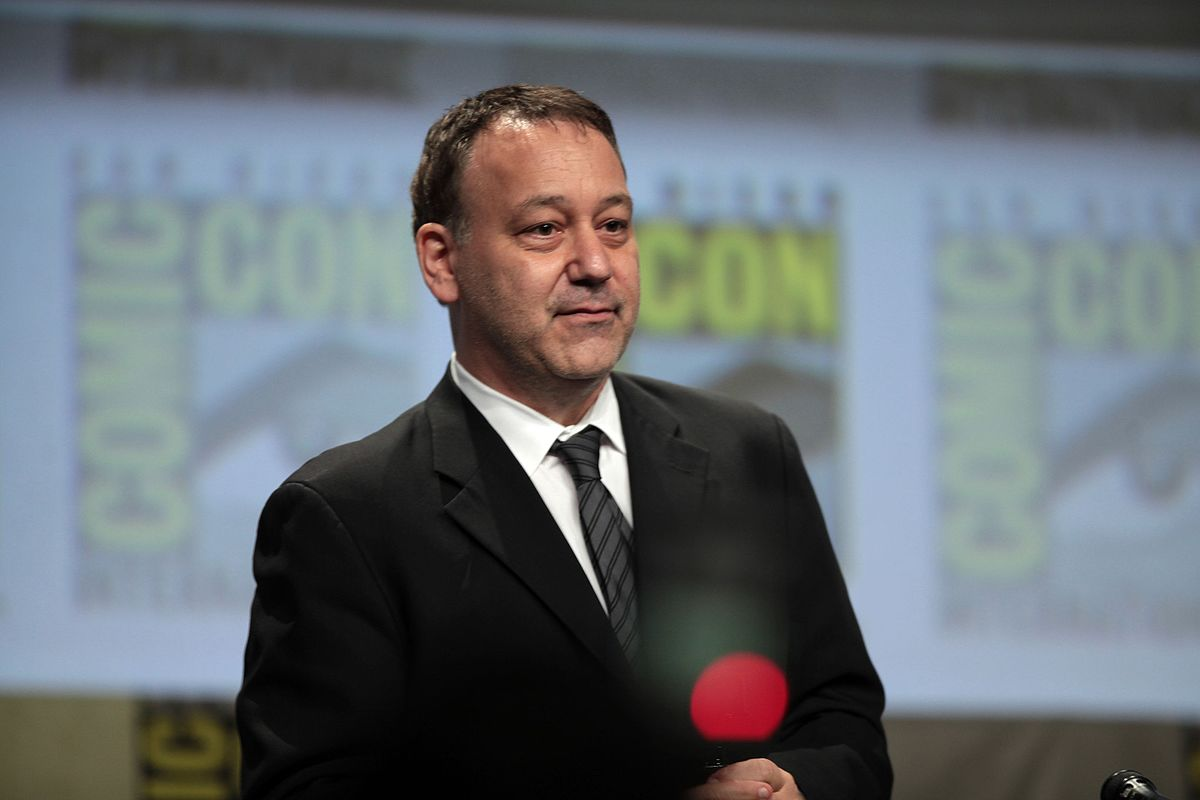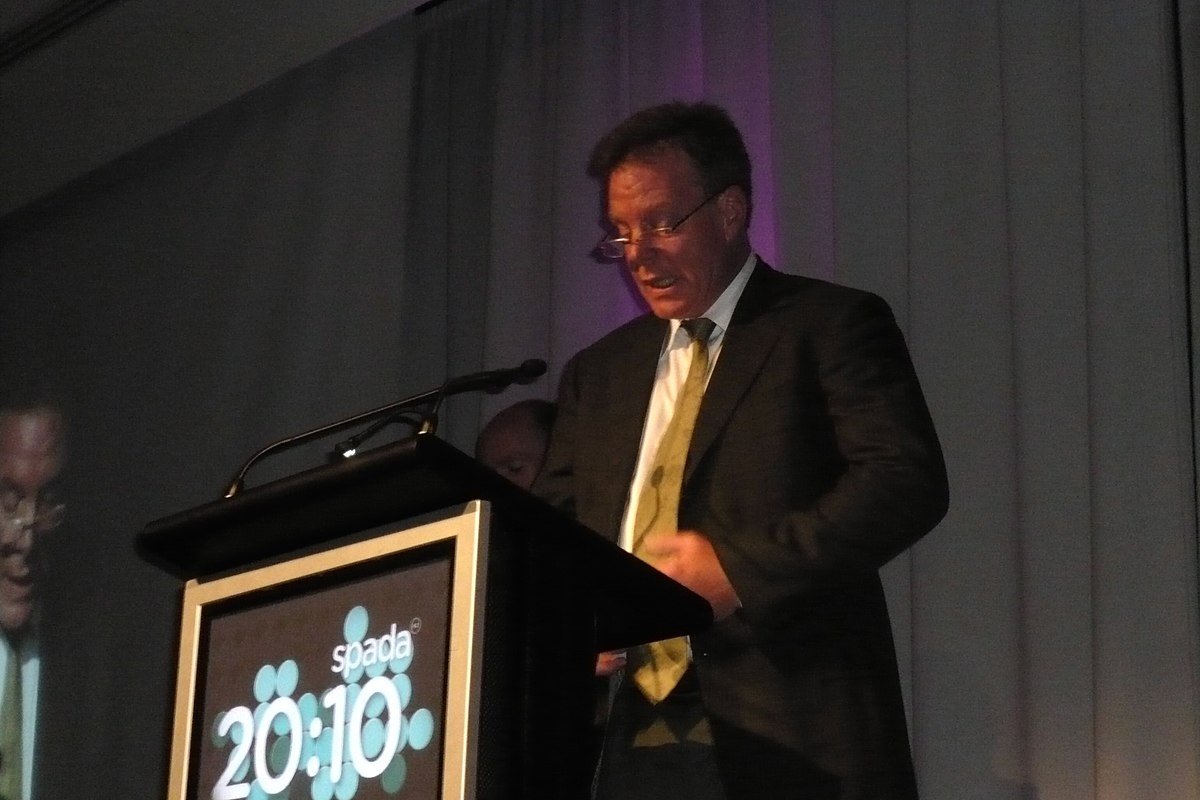Title of the work
Studio / Production Company
Country of the First Edition
Country/countries of popularity
Original Language
First Edition Date
First Edition Details
S04E01. Beanstalks and Bad Eggs. Directed by John T. Kretchmer; Written by Melissa Rosenberg. USA, Syndicated (MCA); September 29, 1997. 44 min. – S04E22. Reunions. Directed by Charles Siebert; Written by Alex Kurtzman, Roberto Orci & Jerry Patrick Brown. USA, Syndicated (MCA); May 11, 1998. 44 min.
Running time
Format
Date of the First DVD or VHS
Awards
1998 – Hercules: The Legendary Journeys. Season 4, Episode 8 “...and Fancy Free” won “Film Originated Television Series – Audio Post Production” in “International Monitor Awards”;
1998 – Hercules: The Legendary Journeys (Joseph LoDuca) won “Top TV Series” in “ASCAP Film and Television Music Awards”;
1999 – Hercules: The Legendary Journeys. Season 4, Episode 8 “...and Fancy Free”, Michael Hurst won “Best Director – Comedy” in “New Zealand Film and TV awards”.
Genre
Action and adventure fiction
B films
Mythological fiction
Television series
Target Audience
Crossover
Cover

We are still trying to obtain permission for posting the original cover.
Author of the Entry:
Joel Gordon, University of Otago, joel_gordon@hotmail.co.nz
Peer-reviewer of the Entry:
Elizabeth Hale, University of New England, ehale@une.edu.au
Lisa Maurice, Bar-Ilan University, lisa.maurice@biu.ac.il

Sam Raimi by Gage Skidmore. Retrieved from Wikimedia Commons, licensed under CCBY-SA 2.0 (accessed: December 30, 2021).
Sam Raimi
, b. 1959
(Producer)
Sam Raimi is an American filmmaker, actor and producer. He was born in Michigan (USA), to a conservative Jewish family, and attended Michigan State University. His career has been closely linked with that of Robert Tapert. Although Raimi intended to major in English, he chose to put his studies on hold in order to work on the feature film The Evil Dead (1981), after the success of his first co-operative production with Robert Tapert, The Happy Valley Kid (1977). Raimi is a co-founder of both Renaissance Pictures and Ghost House Pictures (see above). His solo-directorial work (distinct from productions with Tapert) include the original Spider-man trilogy (2002–2007) starring Tobey Macquire, and, most recently, Oz the Great and Powerful (2013). His most recent solo-producer role was for the crime-thriller, Don’t Breathe (2016). As an actor, Raimi has appeared in many of his own films as minor characters – such as his cameo appearances in The Evil Dead and its sequels. Raimi turned to television during the 1990’s, working together with Tapert as a producer for the franchises Hercules: The Legendary Journeys, Xena: Warrior Princess, Young Hercules and Spartacus.
Bio prepared by Joel Gordon, University of Otago, joel_gordon@hotmail.co.nz

Robert Tapert by Cooltv. Retrieved from Wikipedia, licensed under CC0 (accessed: December 30, 2021).
Robert Tapert
, b. 1955
(Author, Producer)
Robert Tapert is an American actor, producer and writer. Born in Royal Oak, Michigan (USA), he attended Michigan State University where he first began experimenting with filmmaking under the influence of Sam Raimi. During this time, they both worked on the film The Happy Valley Kid (1977) in which Tapert also starred in the leading role. Following the success of this venture, the pair began work on their first feature film, The Evil Dead (1981) – directed by Sam Raimi and starring Bruce Campbell – and, in order to assist with its production, Tapert, Raimi and Campbell (along with Irvin Shapiro) co-founded Renaissance Pictures in 1979. This trio have since worked together on numerous successful films – particularly in the horror genre – including: Crimewave (1985), Easy Wheels (1989), Darkman (1990), Lunatics: A Love Story (1991), Timecop (1994), 30 Days of Night (2007) and The Gift (2015). In 2002 Tapert and Raimi co-founded Ghost House Pictures known for, among others, the film franchises The Grudge (2004, 2006, 2009) and Bogeyman (2005, 2007, 2008). Tapert’s involvement in television began during the 1990’s with his most notable productions being the franchises of Hercules: The Legendary Journeys (1995-1999), Xena: Warrior Princess (1995–2001) and Young Hercules (1998–1999) – all of which included both direct-to-television movies and television serials spanning several seasons. It was during this period – in 1998 – that Tapert married New Zealand actress Lucy Lawless (the star of Xena), with whom he has since had two children. More recently, his interest in antiquity and television has returned with the serials Spartacus: Blood and Sand (2010), Spartacus: Gods of the Arena (2011), Spartacus: Vengeance (2012) and Spartacus: War of the Damned (2013) and plans for a Xena reboot for NBC. (see further, his official website, accessed: August 16, 2019).
Bio prepared by Joel Gordon, University of Otago, joel_gordon@hotmail.co.nz

Christian Williams by Pacunagonz. Retrieved from Wikimedia Commons, licensed under CC BY-SA 4.0 (accessed: December 30, 2021).
Christian Williams
, b. 1943
(Author, Producer)
Christian Williams is an American journalist and television writer from Brooklyn, New York. His career in the news industry began in 1972 as an assistant editor (Style Section) for The Washington Post. It was during his early years at the Post that Williams was given a unique insight into the film/television industry, serving as the editor on a behind-the-scenes exclusive when Robert Redford used the Post’s newsroom to research his film All the President’s Men (1976). In 1984 Williams became a reporter in Bob Woodward’s investigative team which led to his second interaction with the film/television industry: in 1986 Woodward’s team (Woodward, Williams and co-journalist Richard Harwood) wrote and featured in an ABC movie, Under Siege, which was based upon the group’s reporting on domestic terrorism. Williams then continued to dabble in the television industry, co-writing (alongside Woodward) an episode of the television drama series Hill Street Blues (1981–1987), before formally leaving journalism for a career as a television writer – specializing in one-hour drama television shows. He went on to co-create (alongside David Milch) the drama Capital News (1990) before assisting in the creation of Hercules: The Legendary Journeys franchise (which began with the five direct-to-television films). Unlike Tapert and Raimi, however, Williams was not directly involved in the production of the Hercules: The Legendary Journeys serial beyond the pilot films. Williams went on to continue writing for television, for example as the co-executive producer of the drama Six Feet Under (2001–2005), until he retired in 2010. He has since turned his interests to authoring books and sailing.
Bio prepared by Joel Gordon, University of Otago, joel_gordon@hotmail.co.nz
Casting
Main Cast:
Hercules: Kevin Sorbo,
Iolaus: Michael Hurst.
Supporting/Recurrent Cast:
Alcmene: Liddy Holloway,
Aphrodite: Alexandra Tydings,
Apollo: Scott Michaelson,
Ares: Kevin Smith,
Atalanta: Corinna Everson,
Autolycus: Bruce Campbell,
Callisto: Hudson Leick,
Cassandra: Claudia Black,
Dirce: Lisa Chappell,
Discord: Meighan Desmond,
Gabrielle: Renee O’Connor,
Hera: Narelle Swenson, Meg Foster,
Jason: Jeffrey Thomas,
Nebula: Gina Torres,
Salmoneus: Robert Trebor,
Xena: Lucy Lawless,
Young Iolaus: Dean O’Gorman,
Young Hercules: Ian Bohen,
Young Jason: Chris Conrad,
Zeus: Roy Dotrice.
Adaptations
Sequels, Prequels and Spin-offs
Summary
Season four of HTLJ, consisting of twenty-two episodes, does little to change the successful format of the serial established by the prior seasons: i.e., the season’s arc presents a series of self-contained narrative episodes that derive inspiration from tropes associated with both the ancient world and fantasy genres. Indeed, certain episodes in this season tread over familiar narrative territory: for example, episode 11 (Medea culpa) includes another example of a dragon slaying quest (here, the quest is actually a flash-back of when young Hercules, Jason and Iolaus defeated a fire breathing monster named Ghidra with the help of a young girl named Medea; cf. S3E10) and episode 15 (Yes, Virginia, there is a Hercules) presents another clip-episode in which the actors from the show are transplanted into a different historical setting (here, set in the modern world with the ‘real’ production/studio team of HTLJ – see further below; cf. S3E17). This said, these are not simple rehashes of the same material and do offer something unique for audiences: the season 4 dragon slaying introduces the trio of young Hercules, young Iolaus and young Jason (see further below); while the season 4 clip show is set in modern day New York and is centred around the metatheatrical twist that Kevin Sorbo, the actor who plays Hercules, is missing from production amidst an earthquake. The narrative focus of this season centres on tying up the Hercules-Hera animosity (E22 Reunions, the season finale, has Hera sent to Tartarus where she cannot harm Hercules ever again once she is finally defeated after having forced Zeus to surrender his immortality) and introducing the figure of Dahak (taken from the XWP serial) as the next ‘big evil’ that Hercules must face (see further below). However, this narrative continuity is secondary to the goal of creating continuity between the various HTLJ franchises (Young Hercules and Xena: Warrior Princess).
Thus season 4 is notable for strengthening ties between the various Hercules-Xena-verse serials/films. This season includes the first appearance of young Hercules and young Iolaus via flashbacks in episode 3 (Regrets… I’ve had a few) with the pair of young heroes appearing alongside young Jason in episodes 11 (Medea culpa – see above), 20 (Twilight), and 21 (Top god): in Regrets… I’ve had a few, Hercules recalls his first encounter with Celesta (a goddess who guides the dead to the afterlife) during his time training in Cheiron’s academy when he accidently slew a bandit; in Twilight, Alcmene is dying and so Hercules and Iolaus recall one of their first encounters with death when they (alongside young Jason) experienced their first major war during a conflict between the Parthans and the Kaylans; and in Top god, with Alcmene now dead, Hercules must consider Zeus’ offer to become a god, recalling the time when he (as young Hercules) was transformed into a god after being fed ambrosia by Apollo and subsequently asked Zeus to remove his new powers after it alienated him from humanity. The inclusion of these flashbacks links the primary serial HTLJ with the new spin-off franchise Young Hercules (which included both a 1998 film and 1998–1999 television serial, see relevant entries). This spin-off franchise was a direct (and successful) attempt to reimagine HTLJ for a younger audience. It should be noted that while Ryan Gosling replaced Ian Bohen as the titular character in the Young Hercules serial (Ian Bohen had starred as young Hercules in HTLJ and the Young Hercules film), most of the franchises’ shared characters were played by the same individuals (for example, Nathaniel Lees as Cheiron, Kevin Smith as Ares and Joel Tobeck as Strife/Deimos) which created a strong sense of continuity across the franchise. This said, the numerous chronological issues that plagued the Young Hercules serial (see relevant entry) are also reflected in the continuity issues regarding the presentation of these younger characters in the HTLJ serial: for example, episode 11 (Medea culpa) retcons Jason to be a peer of Hercules and Iolaus (which matches his presentation in the Young Hercules film and serial) even though in previous seasons he is depicted as much older than Hercules and a love interest for Hercules’ mother, Alcmene (see, S2E11).
Season four also furthers the close relationship of HTLJ with XWP by moving beyond simply sharing the same universe, to sharing narrative arcs and mirroring their chronology. While there are numerous examples of this, it is particularly evident in the HTLJ episode Armageddon now (S4E13): not only is the opening shot of this episode the same as the closing shot of XWP’s episode Maternal instincts (S3E13; suggesting that the HTLJ is a continuation of that particular narrative), but Armageddon now also introduces the Dahak-storyline into the HTLJ serial (Dahak is an ancient evil who was already an established character in XWP and would become the primary antagonist to Hercules in HTLJ season 5, replacing the Olympians Hera and Ares). Following this, episode 14, Armageddon now part 2, presents an alternate timeline in which Xena never encountered Hercules (for, after travelling back through time, Iolaus fails to protect Hercules’ mother from his enemies and so the hero was never born) and thus Xena was successful in conquering the known world.
Analysis
While fantastical and folk-lore motifs remain a clear source of narrative inspiration alongside ancient sources – e.g., episode 1 (Beanstalks and bad eggs) is a retelling of the narrative of Jack and bean stalk, complete with a bird that lays golden eggs (albeit belonging to a Harpy, rather than a goose) – this season also expands to include and adapt science fiction elements. In particular, the concepts of parallel universes and time-travel become essential elements within the narrative arc of this season. Although the concept of time-travel had been played around with in season three (S3E19, The end of the beginning), this particular episode had little bearing upon the overall narrative direction of the season in which it appeared. It is in season 4, episode 5 (Stranger in a strange world) that the concept of parallel universes is introduced as Iolaus switches places with his counterpart from an alternate universe, a universe in which Hercules is a dictator/tyrant rather than a hero. This villainous Hercules, also known as “the Sovereign”, recurs later in the season (E14, Armageddon Now: Part 2 – an episode also featuring time travel) as an ally of Ares and adversary of the heroic Hercules. The introduction of such science fiction elements is not surprising given HTLJ’s creators’ awareness of the popularity that other contemporary sci-fi serials had with teenage audiences (see analysis of HTLJ S3 for the show’s self-aware reference to the successful Power Rangers franchise).
The movement to promote the Young Hercules franchise as a spin-off aimed at younger audiences (see summary) indicates the darker tone of this season (and those subsequent) with more mature themes being explored. For example, in episode 6 (Two men and a baby) Hercules must deal with the accusation that, unbeknown to him, he has fathered a baby with Nemesis. Although it is later revealed that the baby’s father is in fact Ares, not Hercules, questions of fatherly abandonment and even the possible ‘solution’ of infanticide are constantly present in this episode. The inclusion of such mature material, however, reflects the growth of the audience over the years since the premier of HTLJ and a shift to appeal to the more mature audience of the XWP serial (within which, for example, sexuality is a dominant theme).
In light of such a broad range of influences upon this season’s narrative and characterisations, the use of classical material is largely limited to ‘cosmetic borrowings’ – i.e., the presentation of classical themes and figures which not only remove these from their ancient contexts, but share very little at all in common with them. For example, episode 9 “If I had a hammer” is a complete reimagining of the myth of Pygmalion of Cyprus and Galatea (see Ov. Met. 10.243 ff.: a sculptor fell in love with one of his statues which Aphrodite subsequently brought to life). In the show’s appropriation of this mythic narrative, a blacksmith (named Atalanta – with no connection to the mythical figure of the Arcadian maiden of the same name) makes a statue of Hercules out of metal (not an ivory sculpture of a maiden) which is then brought to life by the god Hephaestus. It must be acknowledged that there is a degree of continuity with antiquity here since Hephaestus is a deity connected with blacksmithing in the ancient world and that this association follows a certain internal logic (given that Atalanta is a blacksmith); however, this narrative must be identified as an almost complete modern fabrication. Furthermore, at this point in the show’s production, it is clear that the presentation of antiquity from elsewhere within popular culture is of far more influence than ‘actual’ ancient sources. A prime example of this occurs in episode 10 Hercules on trial: Hercules, charged with endangering the public by setting a ‘bad example’, must defend his innocence in a court of law (reminiscent of contemporary television serials such as Law & Order and The Practice) which results in his innocence being proclaimed via a chorus of “I am Hercules” by all present (including the judge) in imitation of the famous “I am Spartacus” line from Spartacus (1960). This particular Kirk Douglas line has proved particular popular within pop culture with allusions to the “I am Spartacus” line occurring in numerous films, serials, and literature ever since, including another version of “I am Hercules” in 2014’s Hercules Reborn (starring John Hennigan).
Further Reading


